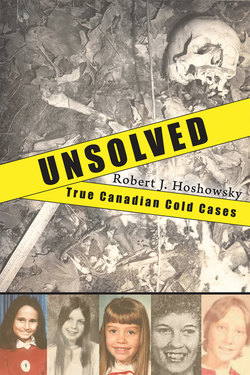Читать книгу Unsolved - Robert J. Hoshowsky - Страница 11
На сайте Литреса книга снята с продажи.
ОглавлениеChapter 3 Ingrid Bauer (1972)
THOUSANDS OF PEOPLE GO MISSING across Canada every year.Fortunately, the majority are found safe within a very short time. Some are children who wander off on their own, others are senior citizens, recent immigrants unfamiliar with their surroundings, or physically or mentally impaired people who are unable to find their way back home.Many so-called “disappearances” are deliberate, often the result of someone dodging the police, bill collectors or late alimony payments, leaving town with a lover, or simply fed up with their home life and making a dramatic change by leaving it all behind. It isn’t unheard of for teenagers doing poorly in school to choose to run away from home instead of facing the repercussions from their parents when the report card arrives. However, it is extremely rare for someone to leave without taking any money or personal belongings with them. In cases where police suspect abduction there are often personal belongings left behind, or a witness who can place the individual at a specific location.
Back in the early seventies, Ingrid Bauer became one of the few persons to disappear in Canada without leaving a single piece of physical evidence behind. When Bauer went missing from the area close to her home in Kleinburg, Ontario, the circumstances surrounding her disappearance were extremely rare: soon after leaving her parents’ home on the evening of August 16, 1972, Bauer vanished without leaving any physical evidence (such as a wallet, purse, makeup, or clothing) behind. There was absolutely nothing that could help police locate the missing fourteen-year-old girl. Many people go missing, but very few evaporate without a trace. In fact, the number of people who vanished without leaving any clues could literally be counted on one hand. Ingrid was one of the few.
“The police didn’t find one blasted thing,” said Brent Bauer, Ingrid’s older brother, who saw his sister minutes before she vanished. He remembers Ingrid as being a bright girl, a bit straitlaced. She was a lot like her boyfriend, Larry. She didn’t smoke cigarettes and had no interest in alcohol. A solid student, her lowest grade was a “B.” She got along well with her family and was taking modelling courses. Ingrid Bauer was not a girl who had a reason to run away from home.
When fourteen-year-old Ingrid Bauer vanished shortly after leaving her family home in Kleinburg, Ontario, on August 16, 1972, she became one of the few known people to disappear in Ontario without a trace — no clothing or personal effects have ever been found.
Prior to Ingrid’s disappearance, there were only two other known similar cases in Ontario, both occurring many years before. The most recent was the case of Mabel Crumback, who was last seen at her parents’ Toronto home on May 28, 1950. A quiet, well-behaved, nineteen-year-old girl who didn’t smoke or drink, Crumback was employed in the office of a steel company, active in her church community, and sang in the choir. Crumback was small, just five foot one inch tall, with dark hair and a fair complexion. The girl’s parents were out of town that May weekend, and her younger brother woke to find Mabel had disappeared from the family’s Willard Avenue home. Police were unable to find any reason for her to simply get up and leave, and there was no sign of a struggle. To police, it appeared Mabel’s bed had been slept in that night, and for some reason her pyjama bottoms were found folded underneath her pillow, but her pyjama top was missing and never recovered. All her personal effects were left in her room, along with her purse and cash. Almost fifty years after she disappeared, when the excavation of a building in the area uncovered a human skull, many long-time residents were convinced it was Mabel. The skull turned out to be several centuries old, and to this day Mabel is still missing.
Prior to Crumback’s odd disappearance, Toronto was swept up in the missing person case of millionaire Ambrose Small. A tremendously successful theatre owner, Small allegedly left his downtown Toronto office on the evening of December 2, 1919, and was never seen again. A slight man, about five-and-a-half-feet tall and 140 pounds, Small had no reason to disappear of his own accord. Earlier on that cold December day, the mustachioed fifty-six-year-old Small signed a deal to sell his theatre chain for a staggering $1.7 million, an enormous amount of money at the time. Small deposited a cheque for $1 million, with the rest of the money to be paid in installments over the next five years. He would never again have to work a single day in his life.
